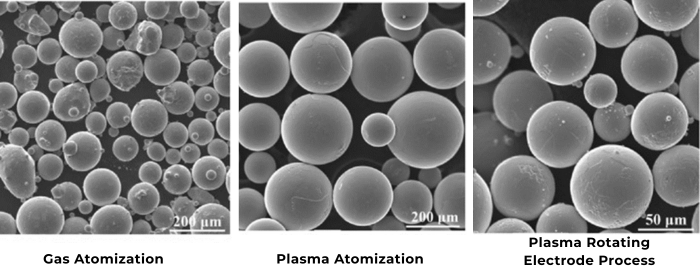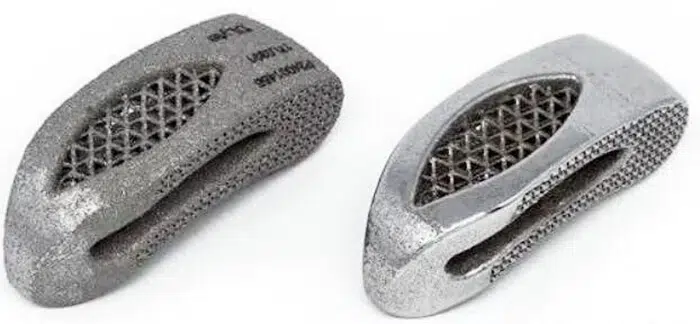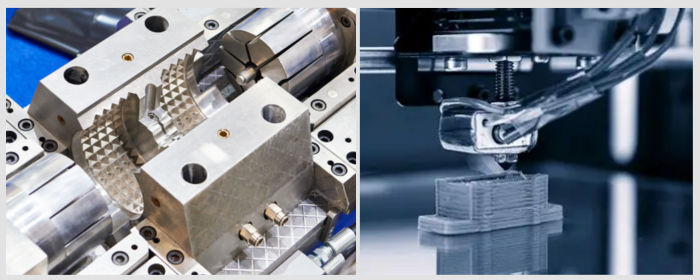

These are submissions for SAM's 2024 Scholarship on spherical powder, written by College Students.
By Krrisha Patel | University of Pennsylvania | June 10, 2024
This project focuses on improving spherical powder technology for 3D printing. We aim to produce high-quality metal powders with consistent size, smooth shapes, and better flow, which are essential for manufacturing processes like powder bed fusion (PBF) and direct metal laser sintering (DMLS). We use two techniques: gas atomization and plasma spheroidization. These methods create metal powders with uniform size and shape, which is key for enhancing mechanical properties in industries like aerospace and healthcare.
3D printing is transforming industries like aerospace and healthcare by allowing the creation of precise, complex shapes. The success of this process depends heavily on the quality of metal powders, which must be spherical, uniform, and easy to work with. High-quality powders ensure consistent layer-by-layer deposition, leading to better final products.
Our goal is to enhance the quality of spherical metal powders for 3D printing. By using advanced techniques, we aim to produce powders that are more uniform and flow better, improving the efficiency and reliability of additive manufacturing (AM) processes.
We use two main techniques:
We also use tools like Scanning Electron Microscopy (SEM) to examine the shape of the particles and laser diffraction to measure their size.
Both methods show promising results. For example, gas atomization of titanium alloys produced powders with a mean size of 45 microns and over 90% sphericity, which improved to nearly 98% through plasma spheroidization. These high-quality powders enhance mechanical properties and efficiency in 3D printing processes.
Producing powders with consistent size and shape is challenging because several factors, like gas flow rate and cooling speed, must be precisely controlled. Additionally, scaling up from lab production to industrial scale requires careful testing and adjustments.
This project represents significant progress in spherical powder technology for 3D printing. By improving the production methods and quality of metal powders, we can enhance the performance of 3D-printed components, especially in critical industries like aerospace and healthcare. Continued research will help overcome current challenges, making additive manufacturing even more reliable and cost-effective.
Author Biography
I am an incoming freshman at the University of Pennsylvania, passionate about science and technology. My experience includes placing 3rd in the National Science League Competition for Biology and 2nd for Physics in 2022. I co-authored a review presented at the Anti-Racism in MedEd Symposium and received the American Academy of Pediatrics Youth Achievement Award. During my internship at IPMD Inc., I gained an interest in spherical powder technology, aiming to improve the reliability and efficiency of 3D-printed components.
By Nicholas Gbenebitse | Pace University | June 27, 2024
This project investigates advancements in spherical powder technology, focusing on improving powder qualities such as particle size distribution, surface morphology, and material composition. The study explores atomization and plasma spheroidization methods and their effects on thermal stability, flowability, and packing density. These advancements can lead to more efficient and eco-friendly manufacturing in industries like biomedical and aerospace.
Spherical powder technology plays a crucial role in modern manufacturing, particularly in additive manufacturing (3D printing). The uniformity and flowability of these powders are essential for high-precision applications. This project aims to enhance the quality of spherical powders, making them ideal for industrial use in fields like aerospace and biomedical engineering.
The two main processes for creating spherical powders are atomization and plasma spheroidization:
Various analytical methods will be used to evaluate the powders:
The quality of spherical powders depends on the production method:
One major challenge is achieving consistent particle size distribution. While plasma spheroidization yields better results, its high cost limits widespread use, requiring a balance between quality and affordability.
Spherical powders can be used in the aerospace sector to produce lighter, stronger components, reducing fuel consumption and emissions. In the biomedical field, they could improve the mechanical and biocompatibility properties of implants.
This project advances spherical powder technology, offering opportunities to improve manufacturing processes, making them more efficient and sustainable.
Author Biography
I am a junior at Pace University, majoring in Business Management with a 3.3 GPA. I have been honored to make the Dean’s List in the spring semesters of 2023 and 2024. I’m passionate about tech sales, and my long-term goal is to become an enterprise account executive. This project allows me to explore innovative manufacturing techniques, supporting sustainable development in various industries.
By Hung Hong | University of Florida | July 10, 2024
Spherical powder technology is transforming advanced manufacturing, especially in the aerospace industry. My research focuses on synthesizing high-quality spherical metal powders through methods such as gas atomization and the plasma rotating electrode process (PREP). These powders have exceptional properties that improve additive manufacturing (AM) processes like selective laser melting (SLM) and electron beam melting (EBM), both of which are crucial for creating aerospace components with higher precision, strength, and durability.
The project produces spherical powders using two primary methods:
These powders are analyzed using advanced tools such as scanning electron microscopy (SEM) and X-ray diffraction (XRD). SEM helps assess the shape and surface features, while XRD determines the crystalline structure. Laser diffraction is used to measure the particle size distribution accurately.
The research applies spherical powders in SLM and EBM processes, both of which are known for producing high-precision components with complex geometries. The project investigates how powder properties, like flowability and packing density, impact the final component quality, including surface finish, mechanical properties, and dimensional accuracy.
Preliminary findings show that powders synthesized through gas atomization and PREP have superior flowability and packing density compared to irregular powders. These properties are essential for better layer adhesion and reduced porosity in AM processes. SEM analysis shows that these powders have high sphericity with minimal satellite particles, leading to smoother layer deposition. The components produced using these powders exhibit higher tensile strength and improved fatigue resistance, which are critical for aerospace applications.
Despite these promising results, several challenges exist:
Addressing these challenges is key to the broader adoption of spherical powder technology in aerospace manufacturing.
The successful application of spherical powder technology can revolutionize aerospace manufacturing. With the ability to fabricate complex geometries and lightweight structures, aerospace components will have improved performance, higher fuel efficiency, and enhanced durability. Beyond aerospace, this technology has potential in other fields:
Spherical powders can be used to create custom implants and prosthetics with biocompatible materials, improving patient outcomes.
The electronics industry can use these powders for components requiring high thermal and electrical conductivity, leading to more efficient devices.
Spherical powders can enhance renewable energy systems, such as wind turbines and solar panels, by producing lightweight, high-performance components.
This project demonstrates the potential of spherical powder technology to advance additive manufacturing in aerospace. By overcoming challenges related to cost and quality control, we can unlock the full potential of this technology, not only in aerospace but also in biomedical, electronics, and energy industries. Continued research and innovation in this field will lead to more efficient and sustainable manufacturing processes, driving progress in multiple sectors.
Author Biography
I am Hung Hong, a Computer Science major and Business minor at the University of Florida. My academic background and hands-on experiences in engineering and robotics have fueled my interest in materials science and manufacturing technologies. Through this research project, I aim to contribute to the advancement of aerospace materials, creating innovative solutions to improve the efficiency and performance of aerospace components.







